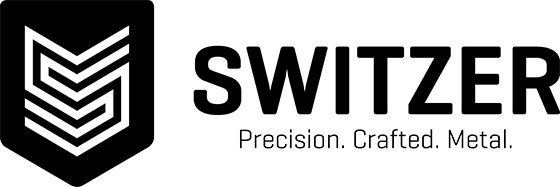The Stack Up: Metal Etching Versus Laser Cutting

When designing or sourcing a manufacturer for a flat precision metal component, trying to determine whether laser cutting or photochemical etching* is the best alternative method to produce it can be difficult. And as with nearly every component, the answer may not be black and white.
Some of the factors to consider include:
- Part Thickness. Both etching and laser cutting have ranges of thicknesses each process can handle effectively. With etching, thicker metals equates to more manufacturing time compared to thinner metals (more material to etch through takes longer), whereas similar thickness increases in laser cutting do not create a significant increase in cutting time.
- Part Geometry/Complexity. A laser cuts the parts’ details individually, whereas photochemical machining is a conveyorized spray process where all features are etched simultaneously. With etching, more complexity does not add more time.
- For example: A piece with a complex design that has many features, like a screen with thousands of holes, will take longer to laser cut than a simple piece, like a round washer with a single hole in the center. In the same example, etching the simple washer would take the identical amount of time as the screen.
- Feature Depth.
- Etching is typically performed in a manner where half the material is etched away from the top and bottom surfaces simultaneously, meeting in the middle of the material thickness. As a result, features & surfaces can easily be half-etched from one-side only, providing for part numbers, logos, bend-lines and stepped surfaces to be included without adding cost or time.
- While laser engraving can be used to mark surfaces with minimal/no depth, laser cutting goes completely through the material from one side and is not effective/efficient in cutting partial depths in metal without increasing time and the potential for thermal stress.
- Material Properties/Metallurgical Effects: Both methods are non-contact metal cutting processes; neither requires the use of hard cutting tools, instead using consumables like gases and chemicals.
- Laser cutting is thermal process, using a beam of coherent light as the heat source for cutting. The resulting thermal effect on the metal can produce undesirable heat-affected zones (HAZ), where the microstructure and properties of the base material in these areas are altered. The high temperature and re-cooling of the material can cause stresses that reduce the strength and/or increase hardness of the material.
- Photochemical etching is a chemical milling process where etchants are used to corrosively dissolve/machine away selected areas of metal. As a result, there are no thermal stresses on the metal; the process leaves the base material properties unchanged in the finished parts.
- Quantity: Both photochemical etching and laser cutting are excellent options when prototyping parts in small quantities. However, scaling up to production quantities to hundreds or thousands, etching typically proves to be both cost effective and time efficient.
Last but most certainly not least is cost. Using some of the primary drivers described above, a thicker part with few features would likely be most suitable for laser cutting. Conversely, a thin part with a high degree of complexity would be an excellent candidate for photochemical etching. For parts in-between where you’re not sure, contact Switzer – we can review your requirements with you and with our years of experience manufacturing precision metal parts, will suggest the best manufacturing method.
*Note: Photochemical etching goes by many monikers, including etching, metal etching, photochemical machining, photochemical milling, and PCM. They are all same subtractive process of removing metal in a precise method by an etchant.
Read More →

